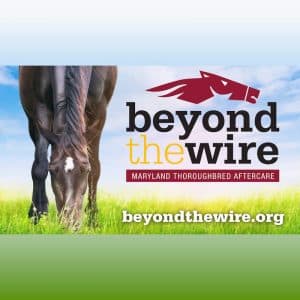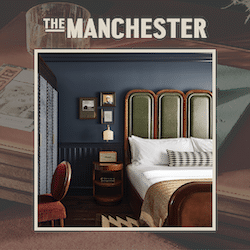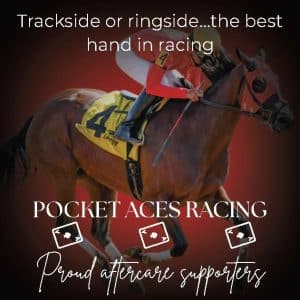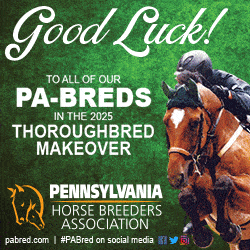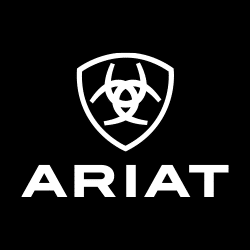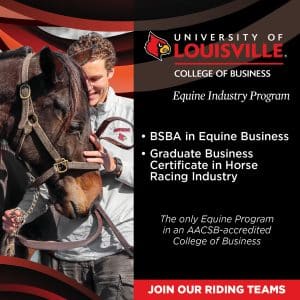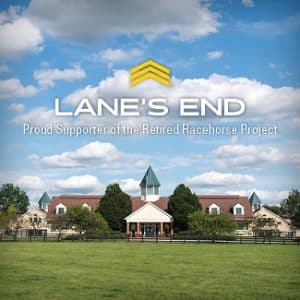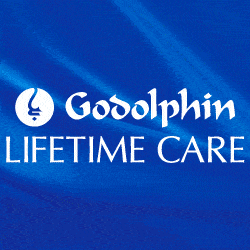Meet Western trainers trying to tap into the off-track Thoroughbred market and prove these horses can excel under any tack
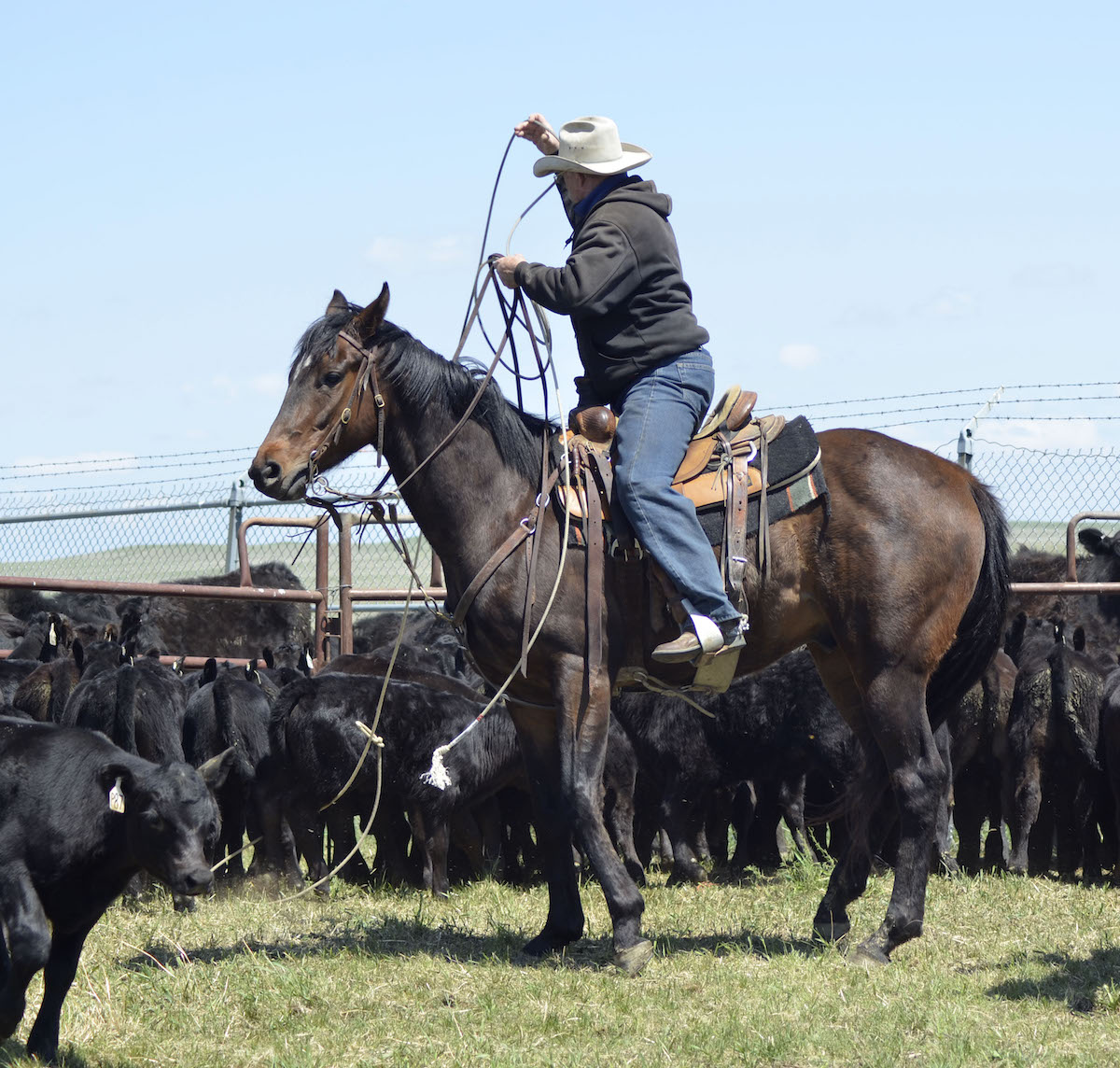
Dale Simanton rides Makeover mount Quaint for a day of branding. Courtesy Dorothy Snowden Simanton
Not all barrel racers are crazy, although the breakneck nature of the sport — imagine a blazing fast drag race through a twisting clover-shaped course instead of the standard quarter-mile straightaway — might suggest otherwise. Barrel racers know from experience that a winning ride requires pedal-to-the-metal acceleration paired with the ability to negotiate tight turns at speed, and, for years, Quarter Horses have been the gold standard in the sport.
Accurate as far as it goes, the long-standing perception that high-level barrel racing is the exclusive province of Quarter Horses may be changing.
Ohioan Laura Wiencek is an avid barrel racer. She’s been a consistent winner with her Quarter Horses, a breed she loves, but unlike many of her contemporaries she is open to the suggestion that other breeds also can be competitive in the sport. She knew it was a risk, albeit a calculated one, when she started shopping for barrel horses at the racetrack.
“You’re going to do what with them?” she heard from incredulous critics of her interest in retired Thoroughbreds.
Wiencek explains that she wants to show that Western disciplines represent a huge, and so far largely untapped, market for off-track Thoroughbreds. In the process, she hopes to destroy some stereotypes.
“People would ride Thoroughbreds Western if they knew that they could,” Wiencek explains. “I try and tell them that I can train a Thoroughbred off the track to be a good barrel horse, and that the Thoroughbred will be less expensive than a Quarter Horse. But it’s hard to convince a Quarter Horse person to get on a Thoroughbred. They are going to fight you.” If a trainer won’t try a Thoroughbred, Wiencek adds, that trainer’s customers probably won’t try a Thoroughbred, either.
“I want to show people that a retired Thoroughbred can be a good barrel horse,” she says, “and that barrel racers aren’t crazy.” The “crazy” number, Wiencek jokes, is only about 80%.
A few months ago, during one of her scouting trips to the backstretch, Wiencek came across a gelding she liked. A nicely bred son of B L’s Appeal, with Kentucky Derby winners showing up on both sides of his pedigree, the horse caught her eye. He was sound after 19 starts, an important consideration when selecting a racehorse for any discipline; he fit her conformation criteria and she took him home.
The gelding’s stable name was “Buckle,” which Wiencek thought a bit odd at the time. The name made more sense when the horse’s registration papers from The Jockey Club arrived a few weeks later. His registered name was “Rodeo Buckle” — a good omen if ever there was one for a retired Thoroughbred about to embark on a second career as a barrel racer.
Wiencek started the Thoroughbred Barrel Racing Association in 2013 to promote a role in the sport for off-track Thoroughbreds. Success in the long run will depend on when — and how many — trainers will be willing to take a chance on a retired Thoroughbred.
“There has been a trickle-down effect,” Wiencek says, “but we need a waterfall effect.”
To bolster her efforts to promote off-track Thoroughbreds, Wiencek turned to Lance Graves, a superstar in the world of barrel racing. Graves is training Rodeo Buckle to compete in Retired Racehorse Project’s Thoroughbred Makeover.
It might have been a difficult decision for Wiencek to turn over her horse to another trainer, but she and Graves are good friends. More important, they both understand the need to enlist as much star power as possible to make their case for retired Thoroughbreds in the Western market.
“People might not listen to me,” Wiencek says, “but they will listen to Lance.”
Makeover Marketing
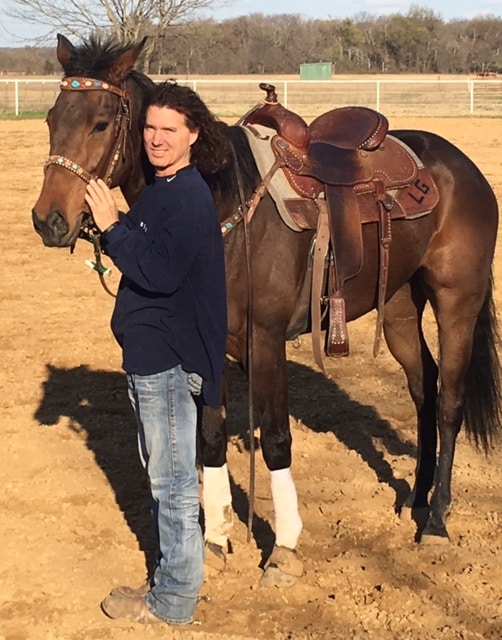
World Champion barrel racer Lance Graves has signed on to train Rodeo Buckle, pictured, for the 2016 Makeover. Courtesy Lance Graves
Based at Graves Ranch, outside Hartshome, Oklahoma, Lance Graves has rock star looks and a personality to match. He talks as fast as he rides, he is a role model for young riders who will be buying horses for decades and if anyone can break open the Western market for retired Thoroughbreds, Graves might be the guy to do it.
He already has an impressive resume littered with World Championships, most accomplished riding the Quarter Horses and Paints that are the core of his business. With that level of success, one question comes immediately to mind: Why change breeds at this stage of his career? Part of the answer is that Graves relishes a challenge — “I’ve already proved that a mustang can barrel race,” he says — but there’s more to his decision than that.
“I’m not just a Quarter Horse fan,” Graves says. “I’m a horse fan. The horse doesn’t choose the sport, we (the trainers) choose the horse. It’s all about the individual, not about the lineage. I’m an equal opportunity horseman.”
Rodeo Buckle is the only retired Thoroughbred Graves is training at the moment.
“I asked Laura to send me one,” Graves says. “I’ve had Rodeo Buckle for a few months. He’s adjusting, learning the new things that are expected of him. He knows how to handle his feet and not stumble through life. He’s competitive and athletic, really fast, and he’s extremely fit and healthy. His lessons so far have been for me to teach him to look where he’s going.”
Graves is not ready to predict how well “Buckle” might perform at the Makeover in October; it is too early for that. Winning certainly would be an important step in changing the preconceived notion that Thoroughbreds are only good for racing and, after retirement, traditional English pursuits like hunter/jumper shows and eventing, Graves says. He suggests, though, that simply participating at the Makeover might be just as important.
“Going to a high-profile competition with a horse like this one will help people see that a Thoroughbred can compete in Western events,” Graves says. “As soon as people can see that, they will start looking at the racetrack for horses.” Success in the market is a long-term goal that won’t occur overnight, Graves admits, but he sounds confident that it will happen.
“Change is a process.”
A Place for Every Horse
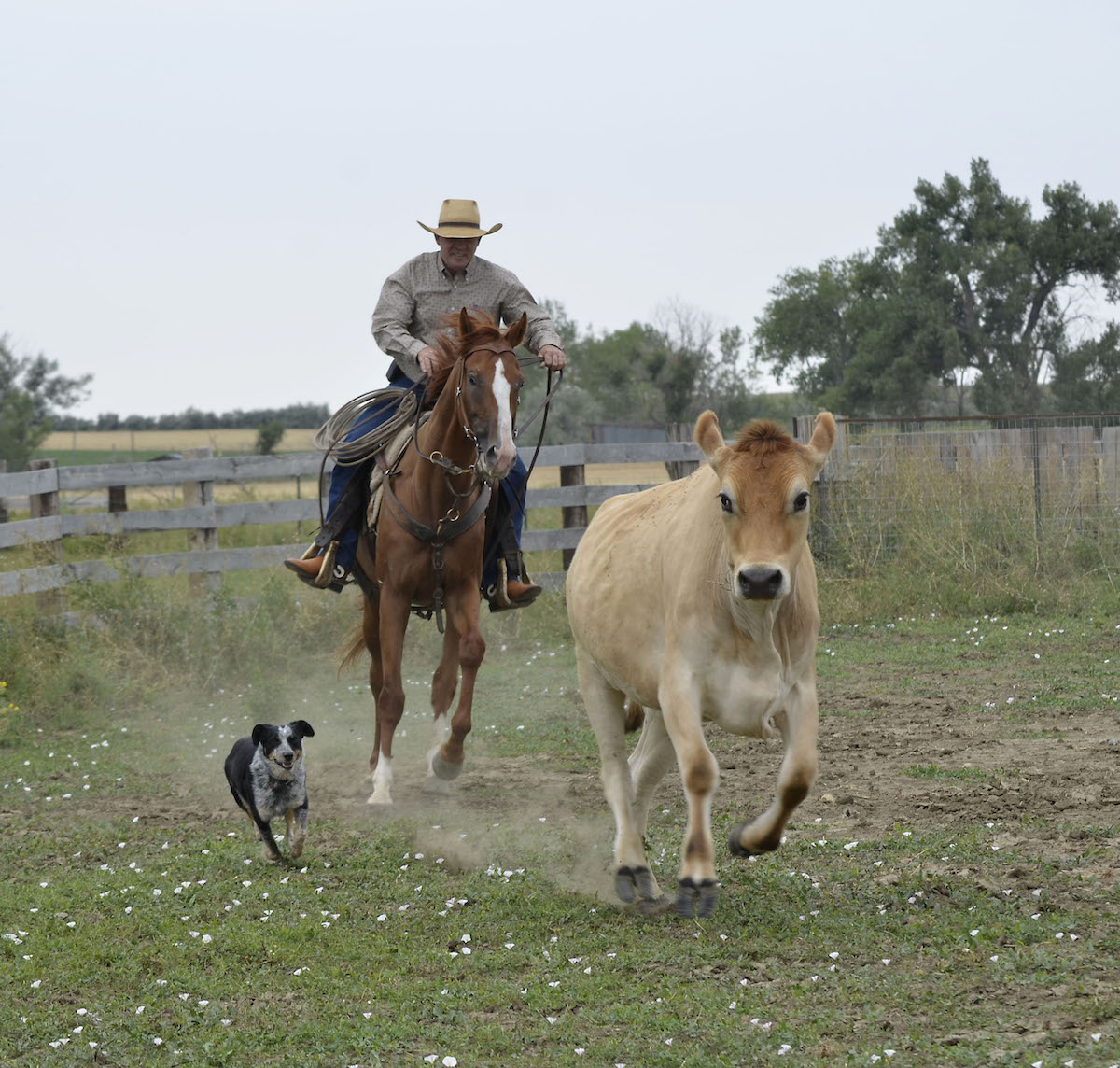
Dale Simanton, pictured on his 2016 Makeover horse Doc Reul, trains Thoroughbreds for second careers in the Western world on his 2,000-acre South Dakota ranch. Courtesy Dorothy Snowden Simanton
No one embodies that process more than Dale Simanton. Owner of Gate to Great Farm, a 2,000-acre spread near Newell, South Dakota, Simanton is a retired Thoroughbred trainer who works with retired Thoroughbreds, schooling them for a variety of second careers in the Western world. He has 25 to 30 Thoroughbreds in training at any time — the hardest part of his job, Simanton says, is “getting them all ridden” — and he is confident he can find a place for nearly all of them.
“Thoroughbreds are the most versatile horses in the world,” Simanton says. That versatility is one of their major selling points because of the specialization Simanton believes has invaded the Quarter Horse world. Breeders now are developing specific bloodlines for reining, cutting, racing, halter, and ranch work, he explains, which can drive up prices to the point where a retrained Thoroughbred can be offered as an attractive alternative. A trend toward specialization in the Quarter Horse world does not mean Simanton sells his horses for bargain basement prices. His success in the market demonstrates that trainers can show a profit with retired Thoroughbreds in Western dress.
“I don’t undervalue my horses,” Simanton says. “When I sold my first $20,000 horse, I thought it was just a fluke, but it wasn’t.” If there was a turning point for Simanton’s fortunes in the Western market for supposedly “unconventional” horses, it was recognition that his expertise as a trainer was not going to be enough. He needed help to reach more customers, so he hired marketing expert Heather Benson.
“We used to sell to ranchers, but when Heather came on board we changed market emphasis,” Simanton says. “We left the ranch market behind. We don’t try to sell to cowboys out here anymore. I’d rather deal with their rich aunt.
“We’re targeting women in their 40s to their 60s because they ride more than anyone else,” he adds. “They probably rode when they were younger, then they took a hiatus for some reason, and now they want to get back to riding.” Simanton believes Thoroughbreds are a natural fit for these riders.
“If you go to an auction out here, you might wind up with a horse that isn’t broke,” Simanton says. “Ranchers don’t ride the way they used to anymore. They’ve got four-wheelers now instead.
“Racehorses coming off the track have been ridden and handled every day,” he says. “They’ve been ridden when they’re sound, they’ve been ridden when they’re sore, they’ve been ridden when they don’t feel good. I’m taking these horses and showing them a new job.”
Simanton got his first horse when he was 12 years old, swapping two cows and two calves for a Thoroughbred. He’s trained Thoroughbreds ever since, more than 50 years at the racetrack and at the ranch. His training philosophy these days is akin to a total immersion foreign language class.
“I ride them all day,” Simanton says. “When I go to a branding I might ride the same horse all day. Sometimes I’ll take two horses, but that’s only so I can get them both ridden that day. The Quarter Horse people are always changing horses at noon.”
Like Graves, Simanton believes taking retired Thoroughbreds to top-tier events like the Thoroughbred Makeover is one way to grow the Western market. He hopes to have two Thoroughbreds for this year’s Makeover, a South Korean champion with an unpronounceable name (since dubbed Doc Reul) by Volponi, and Quaint, a 4-year-old son of Street Sense he got from trainer Graham Motion.
“Quaint ran once,” Simanton says. “He was unplaced, and they gave up on him.”
Simanton does not give up on his horses. Persistence may be the key to his success — and to the success of off-track Thoroughbreds in the Western world.
An Equal Opportunity Trainer
Mary Katzmiller trains reining horses at her farm near Kemp, Texas. A self-described “addict for training competitions,” Katzmiller recently picked up her first off-track Thoroughbred, specifically to compete in this year’s Thoroughbred Makeover. She first heard about the Makeover on “Horses in the Morning,” an equine-related radio program that features Katzmiller’s monthly training and horsemanship segment.
She found Landon’s First at a racetrack in Texas. The gelding, since renamed “Moonshine,” is a 4-year-old Texas-bred who failed to place in five starts. Katzmiller is not pointing Moonshine for a particular event at the Makeover. That decision will come as the horse’s training progresses.
“I’m going to let him tell me what he wants to do,” Katzmiller explains. “He’s got the potential to do anything. I train different breeds, and I like to think that I’m open-minded. I’ve been pleasantly surprised about how versatile (Moonshine) is. I can see all sorts of uses for a horse like this one.”
An emphasis on versatility could become a major selling point for retired racehorses, Katzmiller believes.
“People are starting to look for a more versatile horse,” she says, “and that’s where an off-track Thoroughbred can be a good fit.”
This article was originally published in the Summer 2016 issue of Off-Track Thoroughbred Magazine, the only publication dedicated to the Thoroughbred ex-racehorse in second careers. Want four information-packed issues a year delivered to your door or your favorite digital device? Subscribe now!

